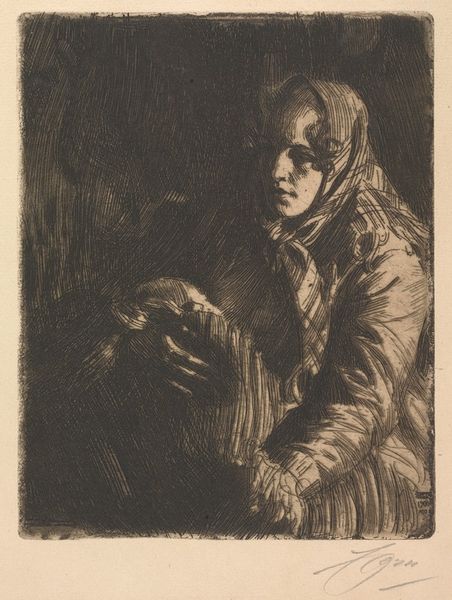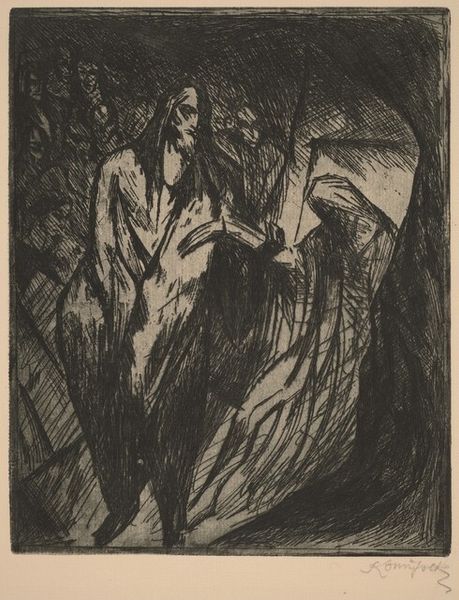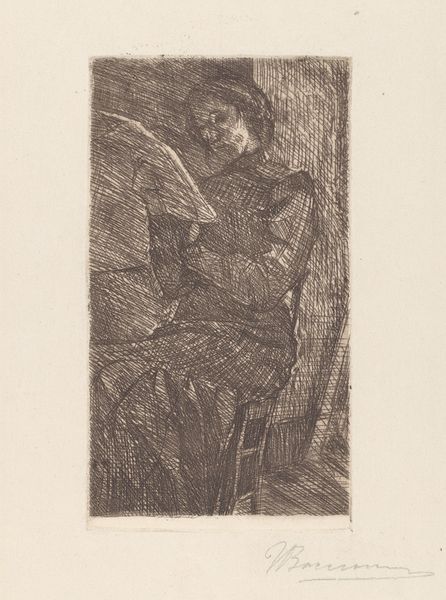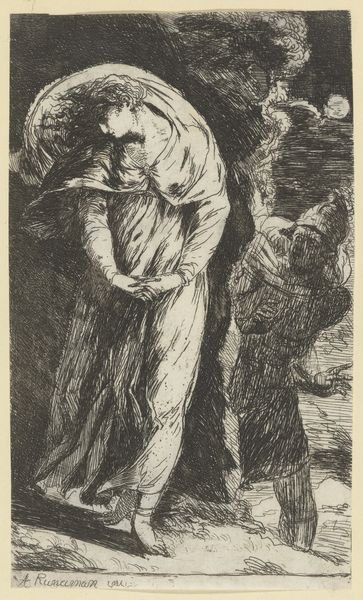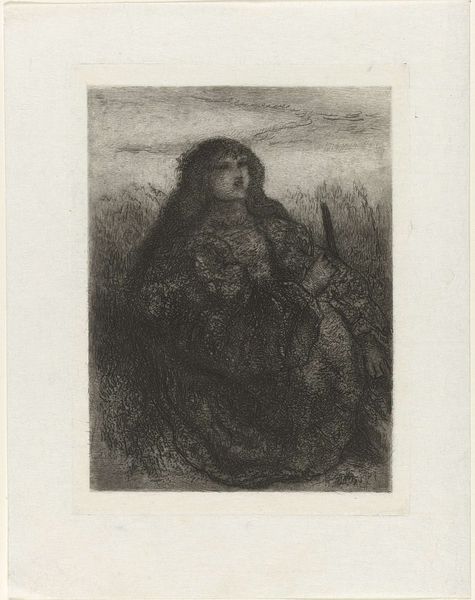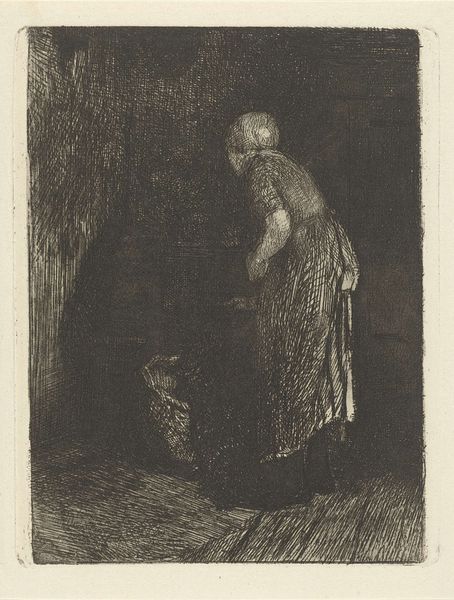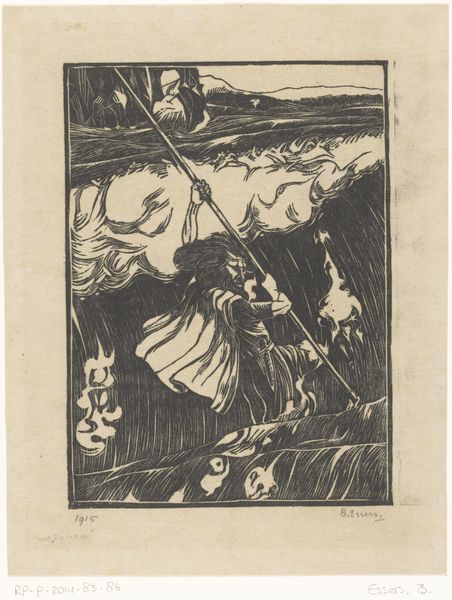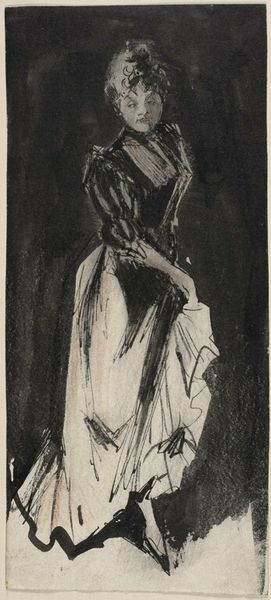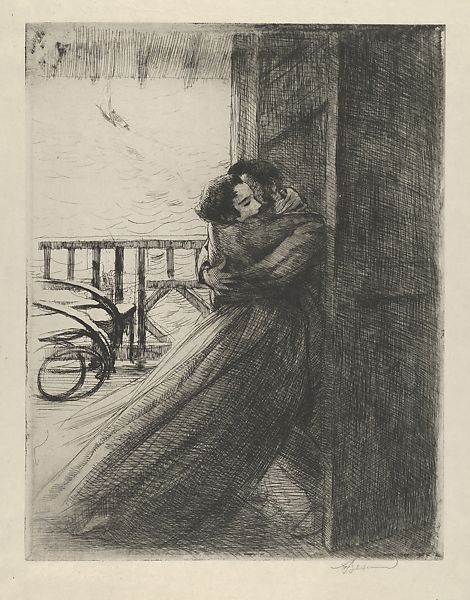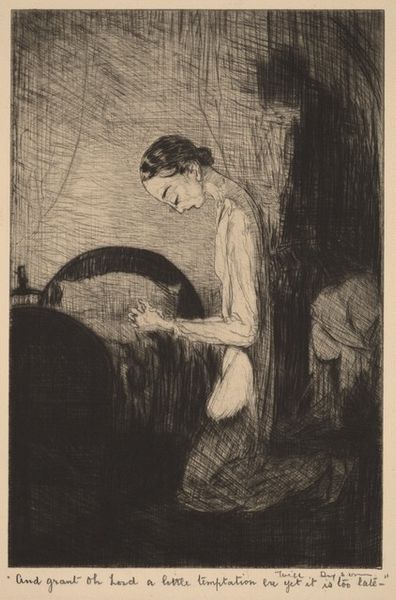
Dimensions: block: 283 x 212 mm sheet: 369 x 265 mm
Copyright: National Gallery of Art: CC0 1.0
Curator: Robert von Neumann’s woodcut print "Mother," created around 1934, presents us with an intriguing figure. The stark contrasts of black and white give it a rather somber mood, don’t you think? Editor: Absolutely. There’s a palpable sense of… toil. You can almost feel the weight of responsibility radiating from the subject. I’m particularly struck by the deep blacks and how they define the contours of the figure, accentuating the labor embedded in the process of woodcut printing, how Neumann likely carved away at that block for hours to give her presence such form. Curator: It's interesting to consider how woodcut, as a medium traditionally linked with populist and often politically charged imagery, might inform our reading. Remember, prints like this allowed for wider dissemination of images during a period of social upheaval. Is "Mother" here presented as a symbol of resilience, or perhaps even suffering, within that historical context? Editor: That's precisely where my thoughts were heading. Given the time period, and especially considering the artist's commitment to materials, I think we must think about the working-class experiences, in this instance expressed through a maternal figure. How daily, routine acts of labor come to be expressed through something typically regarded as 'art.' It complicates the boundaries between work and representation. Curator: There’s a fascinating tension created by those contrasts of domesticity and the stylistic nods to German Expressionism in that heavy lined expression. I wonder how viewers in the 1930s understood it in relation to debates about women's roles, representation of motherhood, or simply the daily realities shaped by the Depression. Editor: Looking at the materiality, one has to ask whether the figure emerges out of the grain of the wood. It becomes a collaboration with the natural world as it translates the form into image. And that image enters the world, ready for purchase. How can this art both humanize experiences of working mothers while being transformed into an commodity in a society obsessed with industrial modes of production? Curator: That point about commodification raises an important question. What did it mean for these kinds of images, often depicting hardship, to circulate within a system of galleries and patronage that often catered to a privileged class? Editor: Exactly! The image presents a puzzle of historical representation through craft production. I guess there’s more to this piece than immediately meets the eye. Curator: Yes, examining its historical and social context is a great path to exploring this print further.
Comments
No comments
Be the first to comment and join the conversation on the ultimate creative platform.
